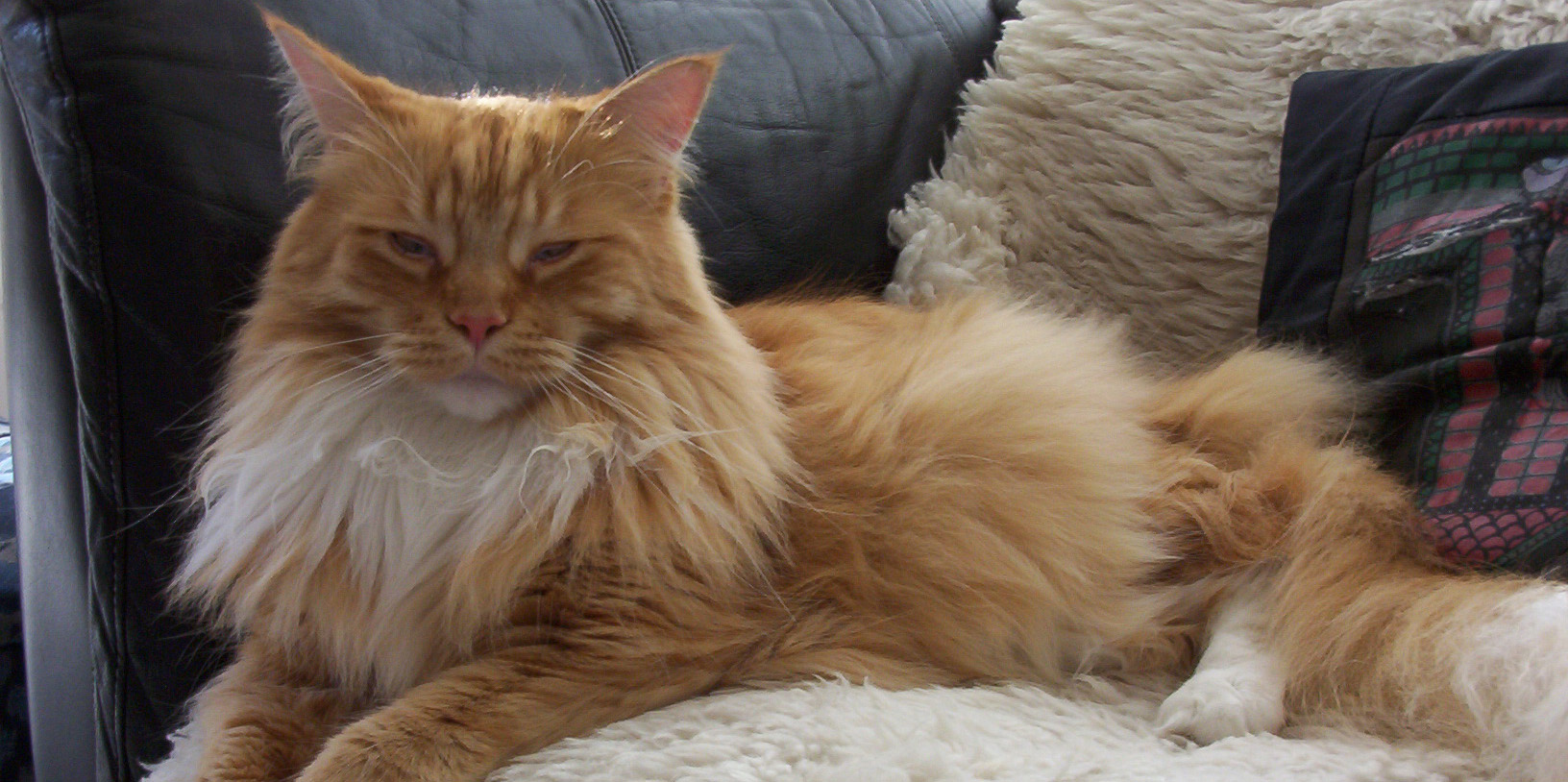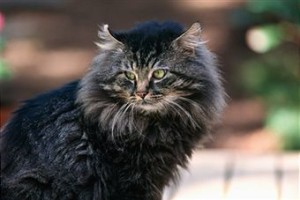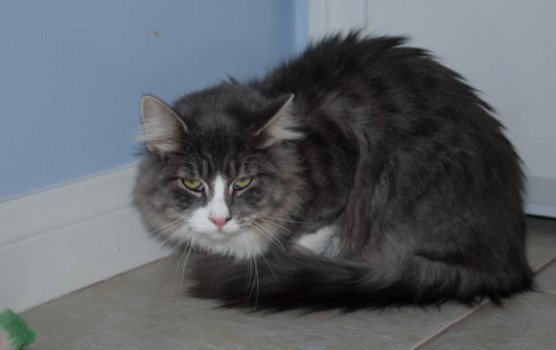American Longhair

Meoww!!
The Maine Coon, also known as American Longhair, is a breed of domestic cat with a distinctive physical appearance and valuable hunting skills.
In 5 Words
- Sweet
- Friendly
- Sociable
- Adaptable
- Intelligent
Snapshot
Size: Large
Weight:
Male: large: >12 lbs.
Female: medium: 8-12 lbs.
Origin: New England
Life Span: 9-13 yrs
Colour: White, Black, Blue, Red, Cream, Brown, Silver, Tortoiseshell, Bluecream, Golden, Pattern: Solid Color, Tortoiseshell, Bicolor, Tricolor/Calico, Tabby, Smoke, Shaded

Characteristics
Learn About American Longhair
The ancestral origins of the American Longhair are unknown. There are only folk tales and theories. One of the folk tales involves the then Queen of France, Marie Antoinette who was executed in 1793. The story tells of the time before her death. She attempted to escape France aided by Captain Samuel Clough. Her most prized possessions were loaded in his ship, including her six Turkish Angora cats. Even though she failed to reach the United States, her pets did and they reached Wiscasset, Maine. They were bred with the other shorthaired breeds, and the American Longhair was developed.
Another folk tale tells of an English seafarer named Captain Charles Coon who had longhaired cats in his ships. When he reaches New England ports, his cats would go and engage with the local cat population. When there were observable longhaired kittens starting to populate the local cat numbers, they were called as “Coon’s cats”.
Another story, most likely a myth, is about raccoons and semi-feral domestic cats being the ancestors of the modern Maine Coon. This myth would account for the bushy tail and the brown color which is its common color. Another idea is that the American Longhair is a product of wild bobcats and domestic cats, seeing that they have tufts of hairs on the tips of their ears.
The generally-accepted theory with American Longhairs is that it is a descendant of longhaired breeds brought out of the country by English seafarers or Vikings, and shorthaired domestic cats. Another breed, the Norwegian Forest Cat bears close resemblance to the Maine Coon, giving the Vikings theory a stronger connection.
American Longhair belongs to the breeds of long haired felines. It is among the most common cat breeds in the US today and is frequently bred with other selective lines of cats. They are said to have been brought to America for the purpose of catching mice. Soon after that, they were bred to preserve the longhaired trait.
They are absolutely beautiful cats. They can be seen in different patterns and colors. They have a long fur that attracts most people as well as require their owner constant care and grooming, as well as from their own grooming skills too. There are also American Longhairs that are not meticulous with their grooming so they did need more attention from their owners. They have to take a bath at least once a week. Their hair may catch infection and may make the cat sick if not properly taken care of. Because of this, they have to be an inside cat.
Apart from the fact mentioned, Maine Coons are basically healthy felines. They make good pets, along with a sociable and adoring attitude. These rarely fight with other animals or their owners. It is observed that these cats are prone to gaining weight. Therefore, you need to monitor its weight. If they live indoors, it is important that they engage in daily exercise to help maintain their form. Overall, these beautiful and gentle felines lead a long healthy life and are generally free from illnesses. They are among the best companions you can have and many pet owners have them throughout America.
American Longhairs are trainable and intelligent, often described as “dog like”. They can be intrusive at times but they can also offer you long hairs of enjoyment with their antics. They want to be with you as you do all sorts of things, so a closed door may be the only thing to stand between you and your privacy. You might be surprised to know that these cats love water. They want to watch it, be in it, wash their food in it, or simply play with it. You may even find an uninvited guest in your shower on any given day.
They are easy-going pets that inherited the Persian’s undemanding nature and are friendly and adaptable. However, they tend to be more lively and active compared to their mild-mannered cousins. They are highly intelligent and know how to somewhat keep their owners in check. They can learn some tricks if they want to.
The average lifespan of American Longhairs is more or less twelve and a half years. They have long adapted to the climate of New England making them a healthy and hardy breed. Whether they are pure bred or not, they can suffer from the most common heart disease among cats – the HCM or feline hypertrophic cardiomyopathy. It is thought to be inherited as an autosomal dominant trait. Males and older cats are thought to be predisposed to HCM. It is a progressive disease and my result in paralysis of the hind legs brought about by clot embolization from the heart, heart failure, and sudden death. Another potential health issue is SMA or spinal muscular atrophy. It is a genetically inherited disease which brings about the loss of the spinal cord neurons that stimulate the skeletal muscles of the limbs and trunks. Symptoms are usually visible within three to four months of age, and result in a shortened life span, muscle weakness and muscle atrophy. Tests are available to detect if your feline has these diseases.
The American Longhair has an oily and silky coat. It is not dense and its maintenance is way easier than other breeds of the same length of hair or longer. Their coat can be self-maintained but will still need occasional grooming. Grooming can be easily accomplished because they love attention of any kind. They only need to be bathed at least once a week and be brushed on a regular basis.
They should be kept indoors, neutered/spayed, and be provided with proper nutrition. It is also important to give them acceptable surfaces for expression of natural behavior. This includes scratching surfaces and clean litter pans. CFA disapproves of tendonectomy surgery or declawing.






